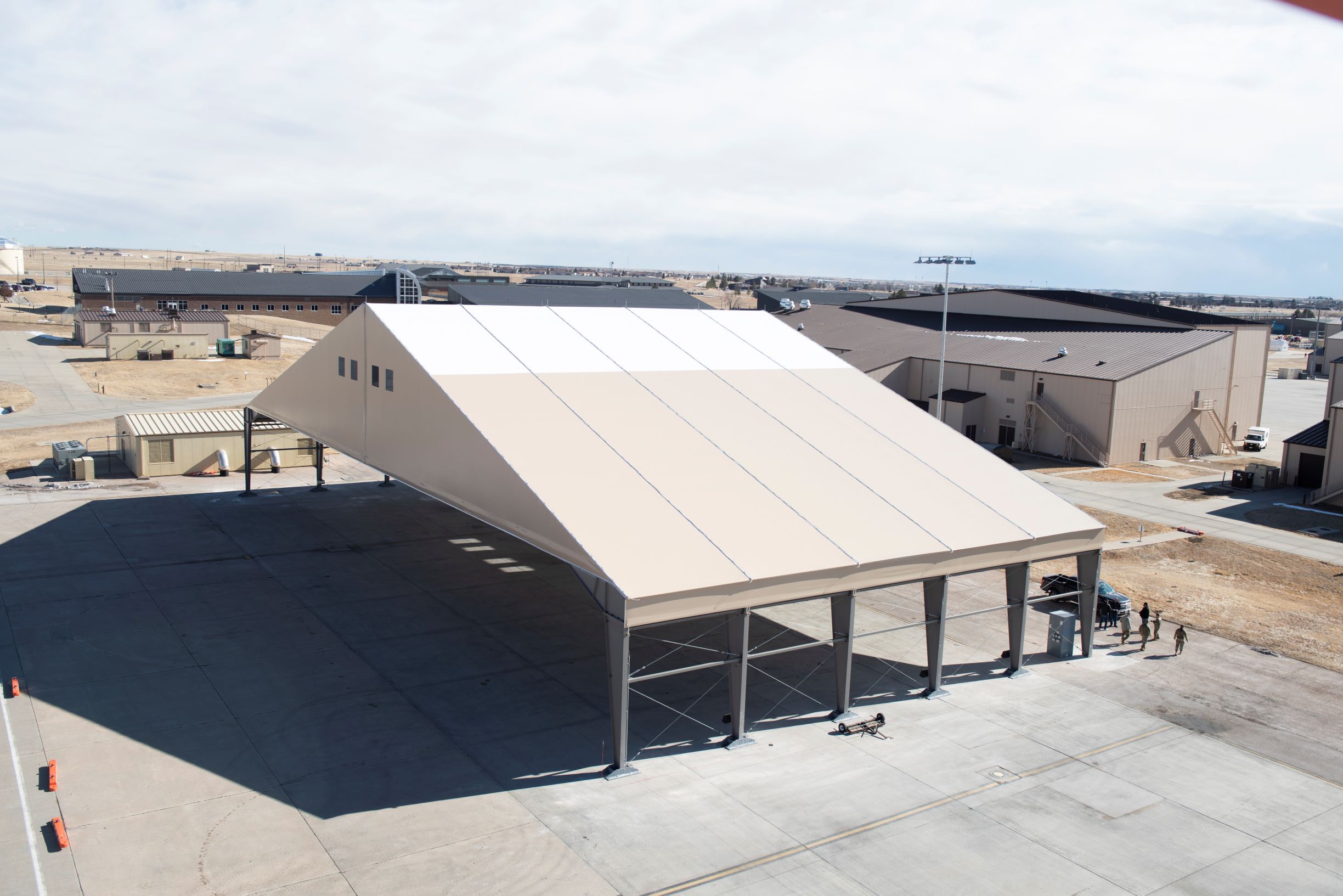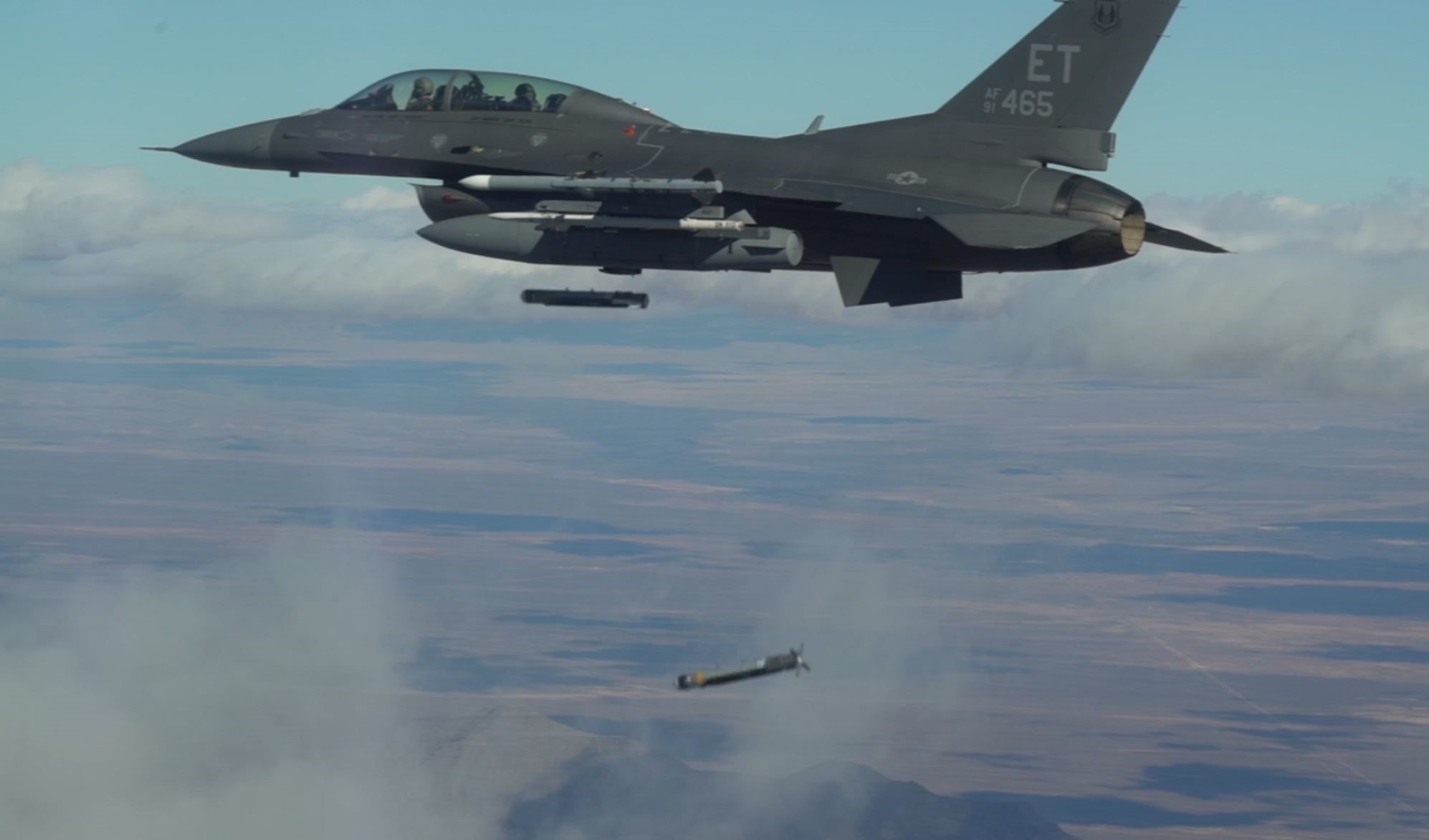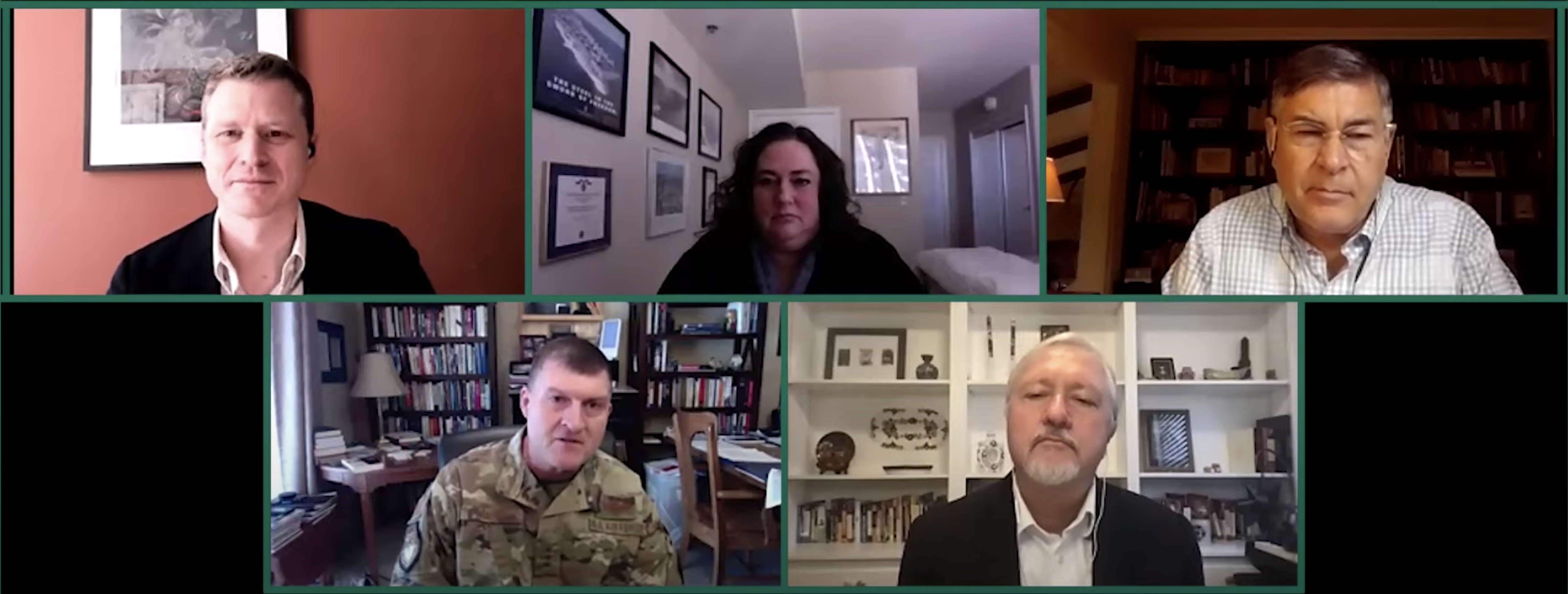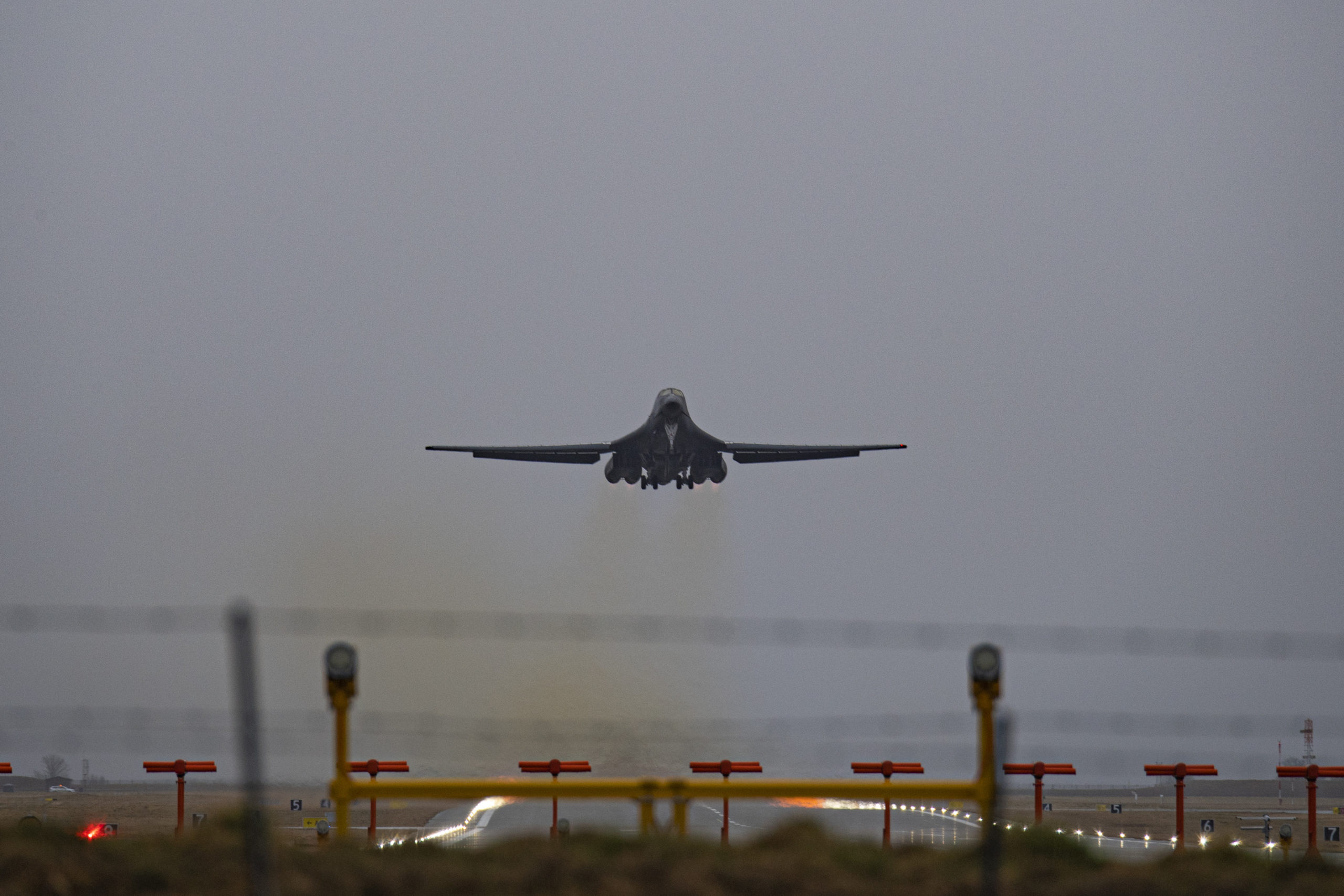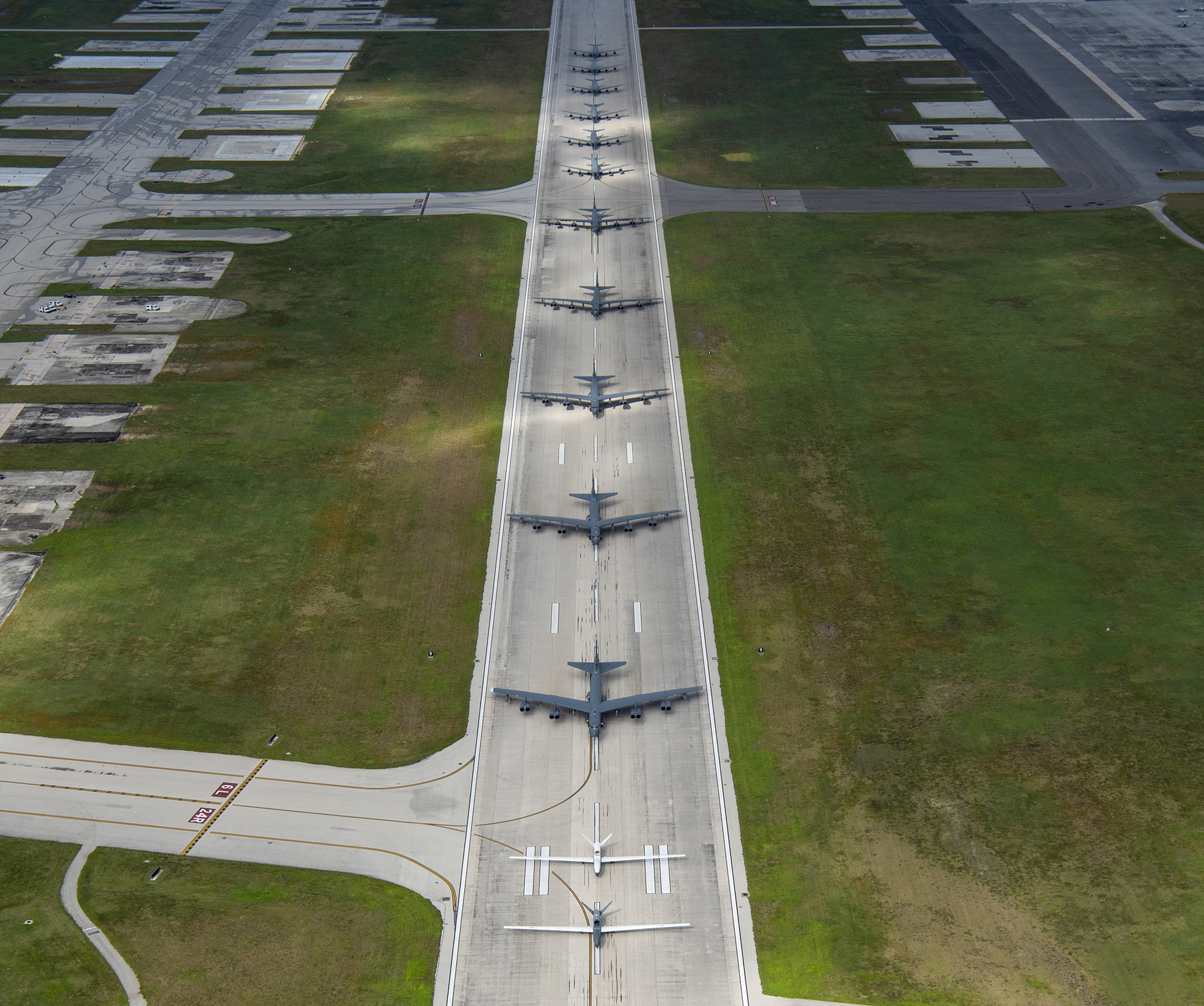A temporary runway shelter being tested for the secret B-21 bomber will also be large enough to protect B-2 bombers from the elements, according to information provided by the Air Force.
An experimental, temporary shelter for the B-21 recently erected at Ellsworth Air Force Base, S.D., which appeared in press release photos to be substantially smaller than B-2 hangars (and suggested a smaller size for the B-21), is actually 200 feet wide by 100 feet deep, the Air Force said in response to a query. That makes it large enough to accommodate the B-2, which has a wingspan of 172 feet and a length of 59 feet, and reveals nothing about the dimensions of the B-21.
The Air Force said the shelter was built by Brite Rigid Frame Buildings of Mosinee, Wisc. Two different shelters will be evaluated, but the builder of the second shelter has not yet been chosen. The second shelter will be “of similar size,” the Air Force said through a spokesman, and contracting will be conducted through the Army Corps of Engineers.
The Air Force wants the shelters to protect the B-21 from long exposure to the sun’s ultraviolet rays, to reduce snow buildup and the need for de-icing in winter, as well as to offer a measure of weather protection for maintainers working on the jets at Stateside and deployed locations. Temporary shelters intended to protect the B-2 at overseas locations were inflatable, closable affairs that could be climate-controlled, to permit curative repairs to the B-2’s low observable coatings and treatments. Technology advances reportedly make such repairs less routine with the B-21.
